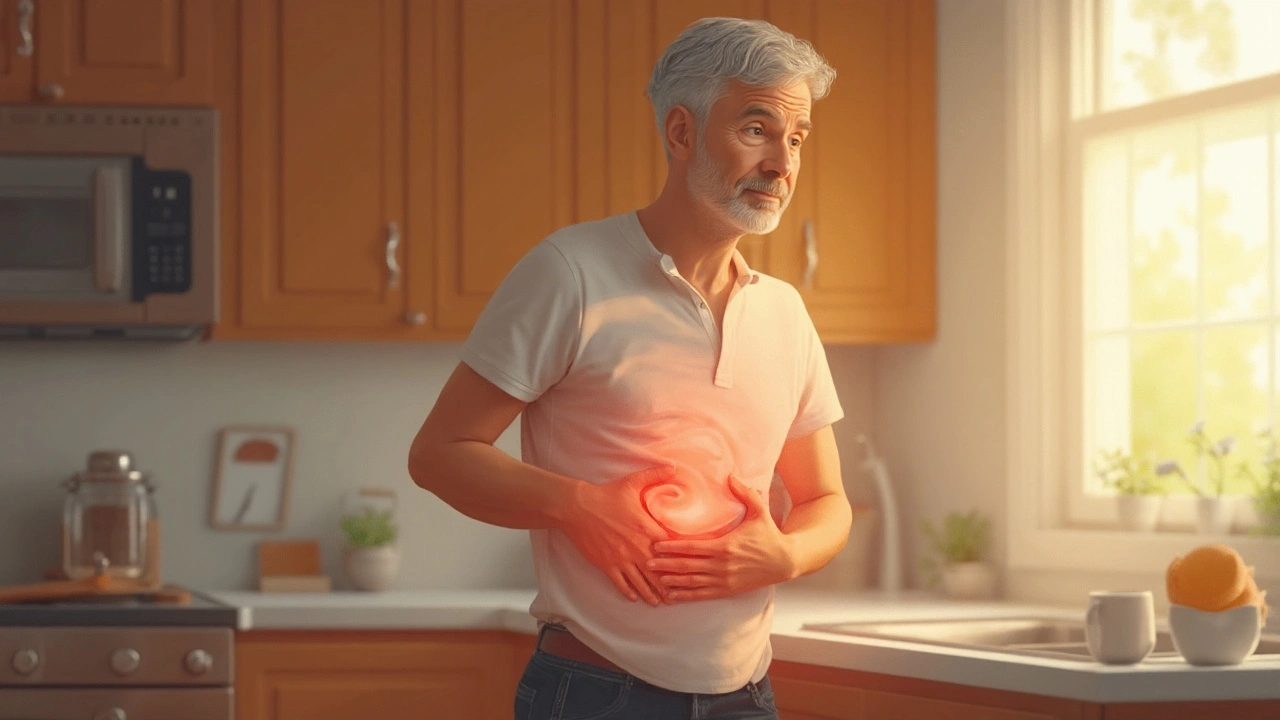Chronic Pancreatitis: Causes, Symptoms, and Management
When dealing with Chronic Pancreatitis, a long‑lasting inflammation of the pancreas that gradually impairs its ability to digest food and regulate blood sugar. Also known as chronic pancreatic disease, it often stems from repeated injury. Another major factor is Alcohol Abuse, regular excessive drinking that damages pancreatic tissue over years. Also called heavy alcohol consumption, it fuels inflammation and scarring. Chronic pancreatitis can also be triggered by Gallstones, hard crystalline deposits that block the bile duct and pressurize the pancreas. Known as biliary stones, they can cause sudden flare‑ups that become permanent. When the pancreas loses function, patients often need Pancreatic Enzyme Replacement Therapy, supplemental enzymes that aid digestion of fats, proteins, and carbs. Commonly referred to as pancrelipase, this therapy helps prevent malnutrition. A frequent long‑term complication is Diabetes, a condition where the pancreas no longer produces enough insulin. Also known as type 3c diabetes, it often develops as the disease progresses. These entities are tightly linked: alcohol abuse contributes to chronic pancreatitis, gallstones can spark it, enzyme therapy treats the resulting malabsorption, and diabetes may follow as a downstream effect.
Key Aspects of Chronic Pancreatitis
Understanding chronic pancreatitis means recognizing its hallmark signs. Persistent upper‑abdominal pain that worsens after meals, unexplained weight loss, and fatty stools (steatorrhea) are common clues. Doctors typically confirm the diagnosis with imaging tests—CT scans, MRI, or endoscopic ultrasound—that reveal calcifications, ductal irregularities, or gland shrinkage. Blood work may show elevated pancreatic enzymes during flare‑ups, but levels often normalize between attacks. Because the disease is progressive, early lifestyle changes matter. Cutting out alcohol completely halts one of the main injury sources. A low‑fat diet reduces the pancreas’s workload, while small, frequent meals improve nutrient absorption. For patients with gallstone‑related disease, surgical removal of the stones or the gallbladder can prevent further attacks. Regular monitoring of blood glucose helps catch diabetes early, allowing prompt treatment.
Treatment options blend medical and procedural approaches. Pain management may involve stepwise use of analgesics, nerve blocks, or, in severe cases, surgical decompression of the pancreatic duct. When the organ can’t produce enough enzymes, doctors prescribe pancreatic enzyme replacement therapy at each meal, adjusting the dose based on stool consistency and weight trends. If strictures or blockages develop, endoscopic stenting can restore duct flow. Nutrition specialists play a crucial role, tailoring diets to ensure adequate calories and vitamins, especially fat‑soluble vitamins A, D, E, and K. For those who develop diabetes, insulin therapy is often required because oral agents seldom work when the pancreas is damaged. All these pieces—causes, symptoms, diagnostics, and interventions—form a comprehensive picture of chronic pancreatitis. Below, you’ll find a curated collection of articles that dive deeper into each facet, from managing pain to choosing the right enzyme supplement, helping you take practical steps toward better health.
Chronic Pancreatitis: Causes, Symptoms & Treatment Guide
- DARREN LLOYD
- 13
Learn what chronic pancreatitis is, why it happens, how to spot the warning signs, and which treatment options can protect your pancreas and improve quality of life.
READ MORE
